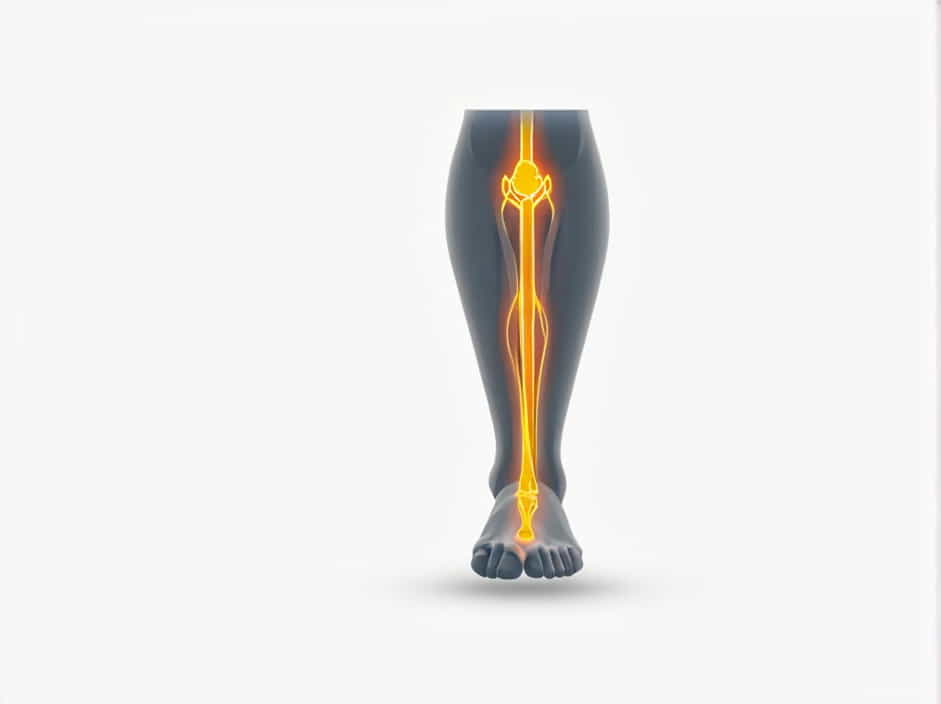The sciatic nerve is the largest and longest nerve in the human body. It plays a critical role in providing motor and sensory functions to the lower limb. The nerve root of the sciatic nerve originates from the lumbosacral spine, and any issue affecting this nerve root can lead to significant pain, weakness, or mobility issues.
In this topic, we will explore the nerve roots, the pathway of the sciatic nerve, its function, common conditions, and how understanding its origin is essential for both diagnosis and treatment of lower back and leg pain.
What is the Sciatic Nerve?
The sciatic nerve is part of the peripheral nervous system, meaning it carries signals from the spinal cord to the lower limb and vice versa. It controls muscles, carries sensory signals, and ensures proper coordination of the hip, thigh, leg, and foot.
Nerve Root of the Sciatic Nerve
Origin of the Sciatic Nerve
The sciatic nerve arises from a combination of spinal nerve roots located in the lower back. Specifically, it originates from:
- L4 (Lumbar 4)
- L5 (Lumbar 5)
- S1 (Sacral 1)
- S2 (Sacral 2)
- S3 (Sacral 3)
These nerve roots come together within the lumbosacral plexus, a network of nerve fibers located in the lower spine. After joining, these fibers form the sciatic nerve, which exits the pelvis through the greater sciatic foramen.
Summary of Sciatic Nerve Roots
| Nerve Root | Region | Function Contribution |
|---|---|---|
| L4 | Lumbar Spine | Partial motor and sensory to thigh and leg |
| L5 | Lumbar Spine | Key root for lower leg and foot sensation |
| S1 | Sacral Spine | Crucial for ankle reflex and foot muscles |
| S2 | Sacral Spine | Assists with leg and foot function |
| S3 | Sacral Spine | Minor sensory contribution to lower limb |
Pathway of the Sciatic Nerve
From Spine to Leg
Once formed, the sciatic nerve travels:
- Through the greater sciatic foramen (under the piriformis muscle).
- Down the posterior thigh, running deep under the gluteal muscles.
- It splits into two major branches near the knee:
- Tibial nerve
- Common peroneal nerve
Areas Supplied by the Sciatic Nerve
- Motor supply: Posterior thigh muscles, hamstrings, part of the adductor magnus, and all muscles below the knee.
- Sensory supply: Skin of the posterior thigh, leg, and foot (except the medial side).
Why Nerve Roots Matter in Sciatic Nerve Function
Each Root Contributes Specific Functions
- L4: Controls some knee extension and ankle movements.
- L5: Important for ankle dorsiflexion (lifting the foot).
- S1: Critical for foot plantarflexion (pointing the foot down).
- S2 & S3: Contribute to sensory signals from the lower leg.
Damage at any of these levels affects specific functions and helps doctors pinpoint the source of nerve problems.
Common Conditions Involving the Sciatic Nerve Root
1. Lumbar Disc Herniation
A herniated disc at L4-L5 or L5-S1 can compress the nerve root, causing sciatica—a sharp pain radiating down the leg.
2. Spinal Stenosis
Narrowing of the spinal canal can pinch the nerve roots before they form the sciatic nerve, especially at L4 or L5.
3. Piriformis Syndrome
Although this affects the sciatic nerve itself (not the root), tightness of the piriformis muscle can cause sciatic-like symptoms by compressing the nerve after it exits the pelvis.
4. Spondylolisthesis
A slipped vertebra can press on the nerve roots, causing sciatic pain along with lower back discomfort.
Symptoms of Nerve Root Compression
- Sharp, shooting pain down the leg (sciatica).
- Tingling or numbness in the lower limb.
- Muscle weakness, especially in foot movement.
- Loss of reflexes, such as the ankle jerk reflex (S1 root).
- Difficulty walking, particularly on heels (L5) or toes (S1).
Diagnostic Importance of Sciatic Nerve Roots
Physical Examination
- Straight Leg Raise Test: Pain radiating down the leg when lifting the straightened leg while lying down.
- Reflex Testing: Loss of Achilles reflex may indicate S1 root involvement.
- Muscle Strength Testing: Weakness in foot dorsiflexion (L5) or plantarflexion (S1).
Imaging Studies
- MRI: Best for visualizing nerve root compression by herniated discs.
- CT Scan: May show bony changes causing nerve root impingement.
Treatment Options for Sciatic Nerve Root Problems
Conservative Treatments
- Physical therapy: Stretching, strengthening, and posture correction.
- Medications: Anti-inflammatories, muscle relaxers, and nerve pain relievers.
- Activity Modification: Avoid prolonged sitting and heavy lifting.
Interventional Procedures
- Epidural Steroid Injections: To reduce inflammation around the nerve root.
Surgery (in Severe Cases)
- Microdiscectomy: Removal of part of a herniated disc compressing the nerve root.
- Laminectomy: Removing part of the vertebra to create space for the nerve root.
Preventing Sciatic Nerve Root Issues
Maintain Strong Core Muscles
A strong core reduces the load on the lumbar spine, protecting the nerve roots from compression.
Practice Good Posture
Proper posture while sitting, standing, and lifting reduces stress on the lumbar discs and nerve roots.
Stay Active
Regular exercise, especially low-impact activities like walking or swimming, keeps the spine healthy and improves nerve function.
Weight Management
Excess weight increases pressure on the lumbar spine, increasing the risk of disc herniation and nerve root compression.
The nerve root of the sciatic nerve is a vital part of lower limb function. Originating from L4 to S3, these nerve roots come together to form the largest nerve in the body. Understanding the anatomy, function, and clinical relevance of these nerve roots helps in diagnosing and treating conditions like sciatica, herniated discs, and spinal stenosis.
Taking care of spinal health through exercise, good posture, and healthy habits is essential for preventing nerve root issues and maintaining pain-free movement in the lower body. By understanding how the nerve root of the sciatic nerve works, individuals can better appreciate the importance of the lumbosacral spine in everyday mobility and quality of life.
